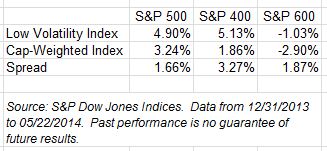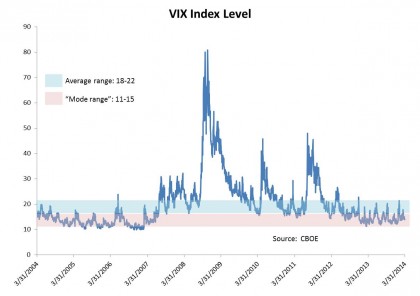Analysts and forecasters in the US expect that the Fed will hold the fed funds rate at its current zero to 25 bp target until around the middle of 2015. Meanwhile, expectations about Europe are shifting. Recent comments from the UK by the former deputy governor of the Bank of England and others suggest that British interest rates could begin a slow climb sooner than in the US, maybe as soon the start of 2015. The UK housing market is very strong with prices climbing rapidly. Moreover, the strength is not just high-priced London houses sought by foreigners; it is in many parts of the country. Higher interest rates and a shift in government policies on support for mortgages are likely. In both the US and the UK, the rise in interest rates will be slow and gradual and the eventual peak is likely to be modest compared to levels experienced in the years immediately before the financial crisis.
In the US the central bank will be feeling its way as it adjusts the operating procedures to controlling interest rates through the rates paid by the Fed on reserves rather than traditional open market operations. Due to quantitative easing and the extreme growth of the Fed’s balance sheet, it cannot control interest rates by draining reserves from the banking system – excess reserves are much too large. Instead, it will raise the rate it pays banks on their deposits at the central bank. The result is that banks will be encouraged to either raise the rates they charge on loans or shift funds from lending to their deposit accounts at the Fed. The central bank may need some time to fine tune its actions.
The outlook in Europe is different. The European Central Bank is concerned that the economy is weakening and that deflation is a growing risk. The response is likely to be continued easy money and efforts to keep yields low, somewhat similar to the Fed’s quantitative easing. Interest rates are likely to remain low, possibly lower than in either the US or the UK.
For investors these developments raise several questions. While many are anxiously awaiting the return of higher yields on relatively safe instruments such as US treasuries, things will not be simple. As interest rates climb, bond prices drop. An investor who rushes into bonds at the first sign of rising yields may be rudely disappointed as capital losses driven by rising yields mount. Investors may hold off until they believe the rise in yields is almost over and then rush into bonds. This could cause a momentary pop in prices and temporally lower yields. In short, timing the re-entry into some segments of the fixed income markets will be challenging. The differing patterns of yields in the US, the UK and the euro area will also provide some questions. If, as seems to be expected, yield turn up in the UK first while in the euro area they lag behind the US, there could be some shifts in both corporate issuance and investor preferences.
By the beginning of 2016, the fixed income landscape is likely to be quite different. Treasuries and sovereign issues that pay a positive real yield would be welcome despite the puzzles they will bring.
The posts on this blog are opinions, not advice. Please read our Disclaimers.















































